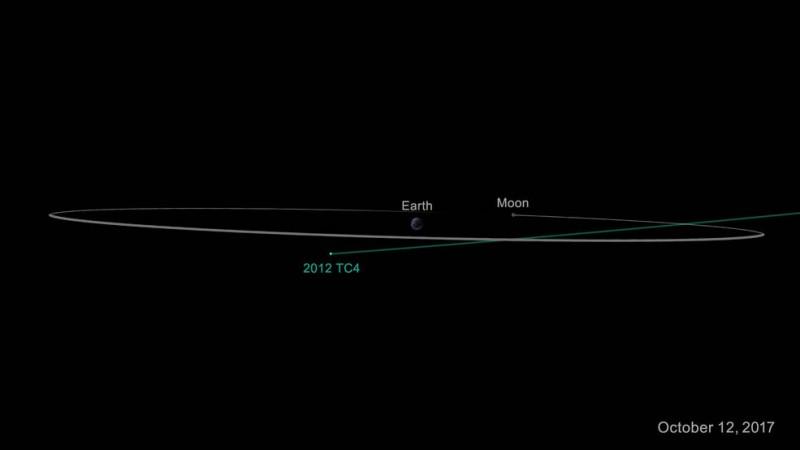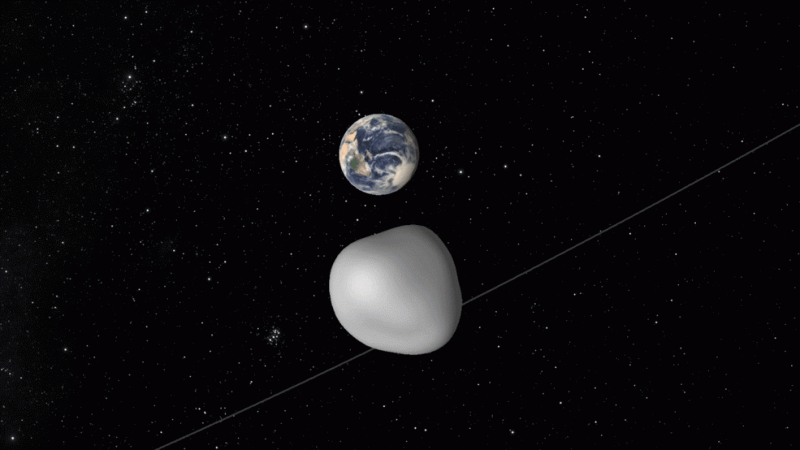
A small asteroid dubbed -- 2012 TC4 -- will be flying by Earth closely in October and astronomers would take the opportunity to test NASA's network of observatories as well as the planetary defense.
ALSO READ: Scientists spot a mysterious object beyond Neptune [VIDEO]
Here are the top 7 things to know about this flyby:
- The 2012 TC4 asteroid was discovered on October 5, 2012, by the Panoramic Survey Telescope and Rapid Response System (Pan-STARRS) from Haleakala on the island of Maui, Hawaii.
- TC4 is an Appolo near-Earth asteroid that is around 30 and 100 feet (10 and 30 meters) in size and will be passing by Earth safely in October. In fact, the asteroid would stay as far as 270,000 kilometres (170,000 miles), ie, two-thirds of the distance from Earth to the moon.
- The exact distance at which this space rock will be passing by is not known yet, but the researchers are sure that it will not come closer than 6,800 kilometres (4,200 miles) to Earth's surface.
- Though this asteroid has no chance of colliding with Earth anytime before October 11 2020, it has been listed in the highly automated collision monitoring system --Sentry Risk Table. The system regularly scans the most current asteroid catalog for possibilities of future impact with Earth over the next 100+ years.
- This asteroid has not be seen since its discovery in 2012. Its observation arc spans just for seven days and the astronomers would recover, characterise, track the space rock and also verify its orbit in the TC4 campaign this October.
- The rotation period of this asteroid is quite slow for a small asteroid of its size. It is around 12 minutes and 14 seconds.
- TC4 asteroid maybe a bit bigger than the Chelyabinsk meteor which had entered Earth's atmosphere and collided near Chelyabinsk, Russia, according to researchers.

"Scientists have always appreciated knowing when an asteroid will make a close approach to and safely pass the Earth because they can make preparations to collect data to characterize and learn as much as possible about it," said Michael Kelley, program scientist and NASA Headquarters lead for the TC4 observation campaign.
"This time we are adding another layer of effort, using this asteroid flyby to test the worldwide asteroid detection and tracking network, assessing our capacity to work together in response to finding a potential real asteroid threat," Kelly added.
ALSO READ: NASA discovers chemical capable of forming cell membrane on Saturn's moon Titan [VIDEO]
The campaign to reacquire TC4 asteroid is led by Professor Vishnu Reddy of the University of Arizona's Lunar and Planetary Laboratory in Tucson.
"This is a team effort that involves more than a dozen observatories, universities and labs across the globe so we can collectively learn the strengths and limitations of our near-Earth object observation capabilities," said Reddy.
"This effort will exercise the entire system, to include the initial and follow-up observations, precise orbit determination, and international communications," he added.
It's the task of NASA's Planetary Defense Coordination Office to spot, track and characterise potentially dangerous asteroids and comets nearing Earth and issue warnings about the potential impacts they may cause and even assist coordination of the US government response planning, in case of a real impact risk.
"This is the perfect target for such an exercise because while we know the orbit of 2012 TC4 well enough to be absolutely certain it will not impact Earth, we haven't established its exact path just yet," said Paul Chodas, manager of the Center for Near-Earth Object Studies (CNEOS) at JPL.
"It will be incumbent upon the observatories to get a fix on the asteroid as it approaches, and work together to obtain follow-up observations than make more refined asteroid orbit determinations possible," Chodas added.














